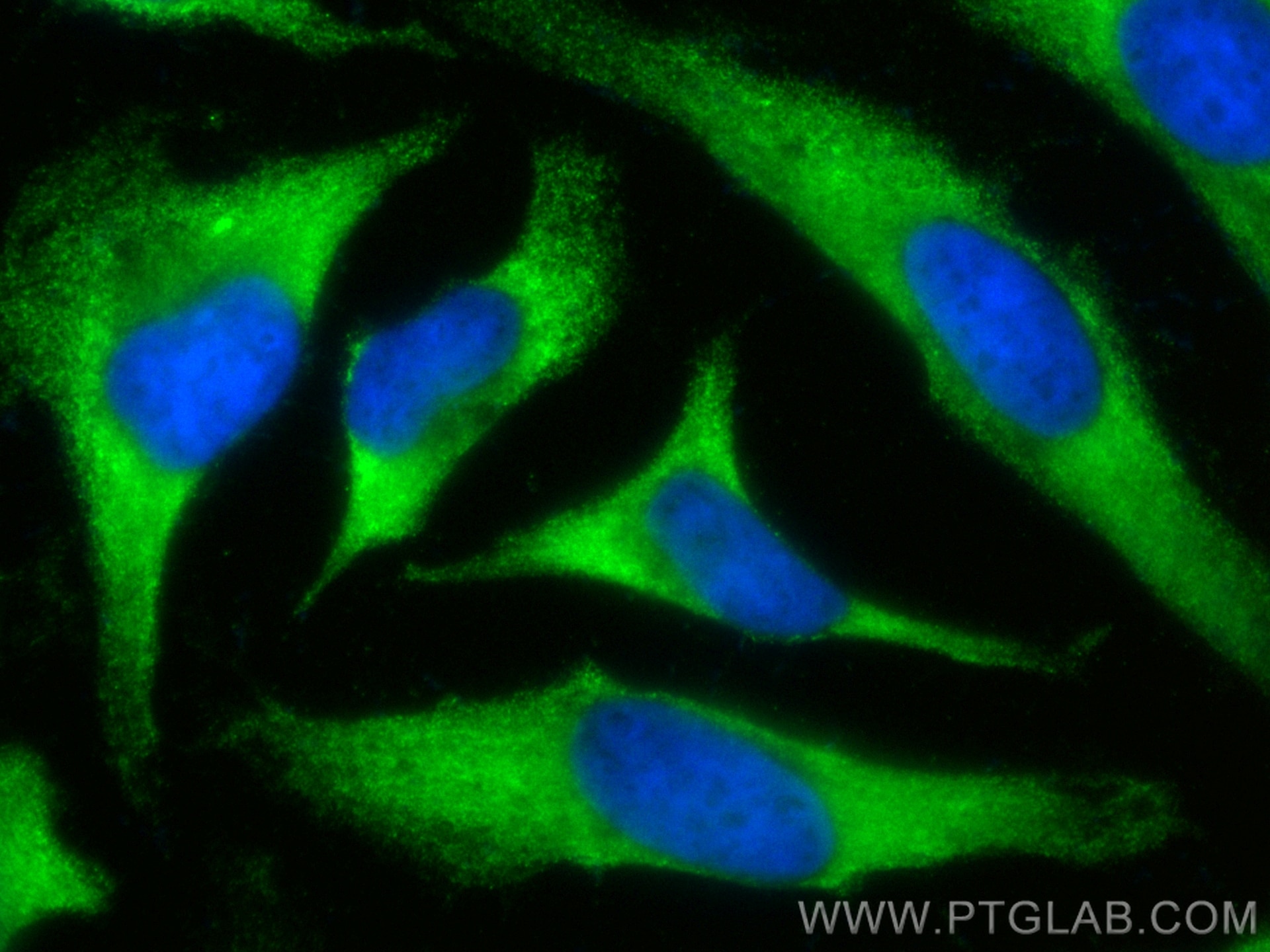CoraLite® Plus 488-conjugated HMOX2 Polyclonal antibody
HMOX2 Polyclonal Antibody for IF
Host / Isotype
Rabbit / IgG
Reactivity
human, mouse, rat
Applications
IF
Conjugate
CoraLite® Plus 488 Fluorescent Dye
Cat no : CL488-14817
Synonyms
Validation Data Gallery
Tested Applications
| Positive IF detected in | HeLa cells |
Recommended dilution
| Application | Dilution |
|---|---|
| Immunofluorescence (IF) | IF : 1:50-1:500 |
| It is recommended that this reagent should be titrated in each testing system to obtain optimal results. | |
| Sample-dependent, Check data in validation data gallery. | |
Product Information
CL488-14817 targets HMOX2 in IF applications and shows reactivity with human, mouse, rat samples.
| Tested Reactivity | human, mouse, rat |
| Host / Isotype | Rabbit / IgG |
| Class | Polyclonal |
| Type | Antibody |
| Immunogen | HMOX2 fusion protein Ag6575 |
| Full Name | heme oxygenase (decycling) 2 |
| Calculated Molecular Weight | 36 kDa |
| Observed Molecular Weight | 36 kDa |
| GenBank Accession Number | BC002396 |
| Gene Symbol | HMOX2 |
| Gene ID (NCBI) | 3163 |
| Conjugate | CoraLite® Plus 488 Fluorescent Dye |
| Excitation/Emission Maxima Wavelengths | 493 nm / 522 nm |
| Form | Liquid |
| Purification Method | Antigen affinity purification |
| Storage Buffer | PBS with 50% Glycerol, 0.05% Proclin300, 0.5% BSA, pH 7.3. |
| Storage Conditions | Store at -20°C. Avoid exposure to light. Stable for one year after shipment. Aliquoting is unnecessary for -20oC storage. 20ul sizes contain 0.1% BSA. |
Background Information
Heme oxygenase is the rate-limiting enzyme in the heme degradative pathway. There are 2 isozymic forms of heme oxygenase, an inducible heme oxygenase-1 (HMOX1) and a constitutive heme oxygenase-2 (HMOX2). Down-regulation of HMOX2 is associated with the increased expression of HMOX1 in human cell lines. HMOX2 is also named as HO-2 and could be implicated in the production of carbon monoxide in brain where it could act as a neurotransmitter.
Protocols
| Product Specific Protocols | |
|---|---|
| IF protocol for CL Plus 488 HMOX2 antibody CL488-14817 | Download protocol |
| Standard Protocols | |
|---|---|
| Click here to view our Standard Protocols |


